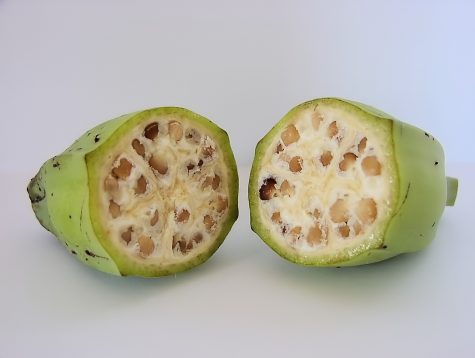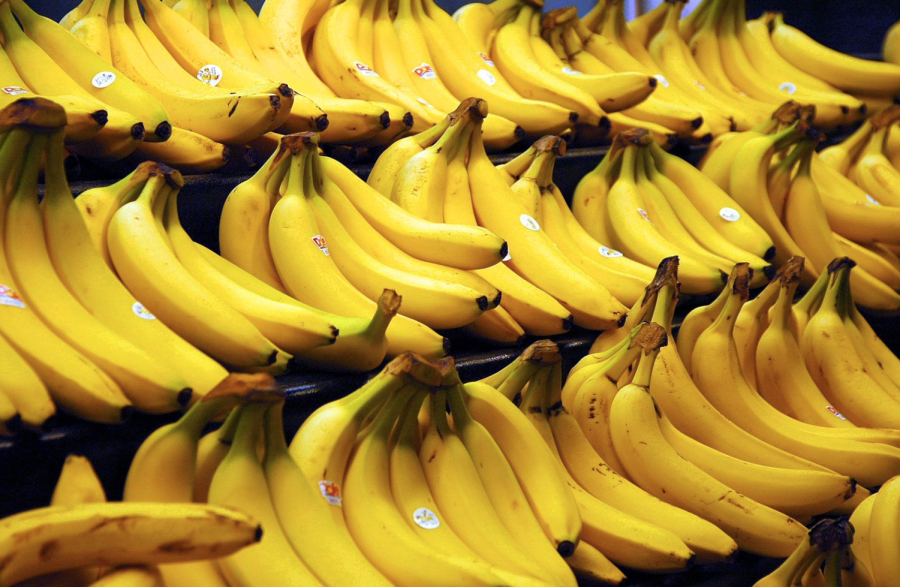Bananas Go Seedless: The History of the Modern Banana
April 13, 2023
You go to the grocery store and you’re craving something sweet, but ice cream cake doesn’t exactly fit into your new diet, so you search the fruit section. Apples are great, but they’re a bit too clunky. Grapes are easy enough to eat, but they’re often sour, and clementines are just too messy. Finally, you reach the largest sub-section of the fruit area: the banana aisle. You grab a bundle of these sweet, easy-to-eat, non-sticky, filling delights and join the other 63% of Americans who buy bananas when they go to a grocery store. It’s their intrinsic versatility and taste that make bananas America’s most popular store-bought fruit. In a country where grocery store goods are pumped with artificial flavors and harmful additives, it should come as no shock to hear that the bananas you buy from your local Stop & Shop aren’t natural. That’s right; our modern-day Cavendish bananas are genetically engineered. So let’s take a look at how a 10,000-year-old Asian fruit made its way to your local supermarket.
According to the Australia Banana Growers’ Council, Bananas are the world’s first fruit, first discovered on the Malay Peninsula, Indonesia, the Philippines, and New Guinea. They were not sweet and had many large seeds that made them difficult to consume. They were brought over to Africa and other parts of Asia thousands of years later via traders. When Alexander the Great conquered India, he brought this new fruit to Europe for the first time. In Africa, two species of bananas cross-bred, thus leading to a banana that appears very similar to the one we eat today, although not of the Cavendish variety.

We often think of bananas as a South American fruit, but bananas didn’t reach Latin America until the 1500s. This seems hard to believe considering that in 2019, according to PBS, 80% of the world’s bananas were exported from South America and the Caribbean region, with most of them being Cavendish. There was even a 36-year-long South American conflict over these fruits from 1898-1934 known as the Banana Wars. The term banana republic was coined by O. Henry in reference to an economically unstable country (typically in South America) that depended heavily on the export of one product, namely bananas. The United States sought to maintain its economic stake in these banana republics, which often led to armed battles. Bananas had the power to impact world conflict.
Finally, onto the history of the Cavendish. In 1826, a wild species of banana was brought from China to the Indian Ocean island of Mauritius, where it was then shipped to England. According to Researching Food History, English gardener and engineer Joseph Paxton brought these bananas through several rounds of artificial selection in order to craft the perfect, sweet, dessert banana we eat today, which he named after William Cavendish, 6th Duke of Devonshire. The Cavendish has only enjoyed its status as the most popular species of banana since the 1950s, when it usurped the popularity of the Gros Michel (literally “Fat Michael”) variety. Artificial banana flavors, such as those in Laffy Taffys and popsicles, based their flavor on the Gros Michel. The Gros Michel then became functionally extinct due to the deadly Panama disease. Although Cavendish are resistant to the Panama disease, today, the TR4 strain of Fusarium, unfortunately, threatens the livelihood of this species of fruit.

So, the next time you pull a banana out of your lunchbox, mix one into your smoothie, or bake a bunch into a tasty bread, appreciate the thousands of years of cultivation, history, and science that led to this consumption and appreciate its delectable flavor before it disappears.

















































































































































